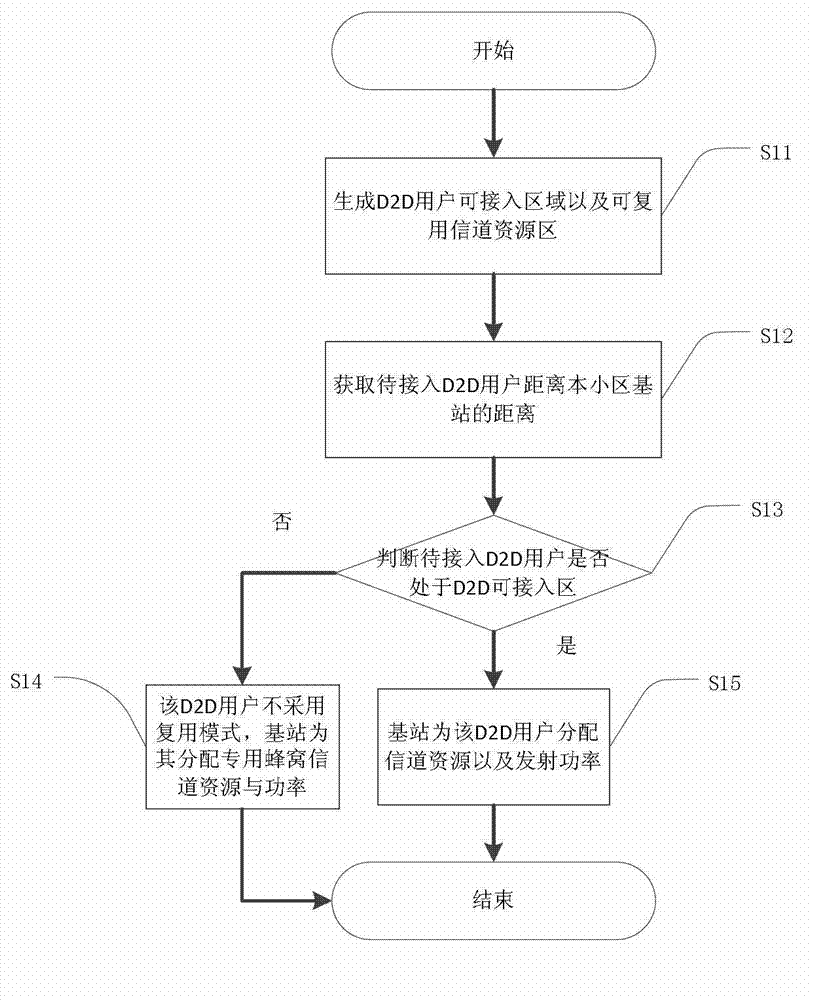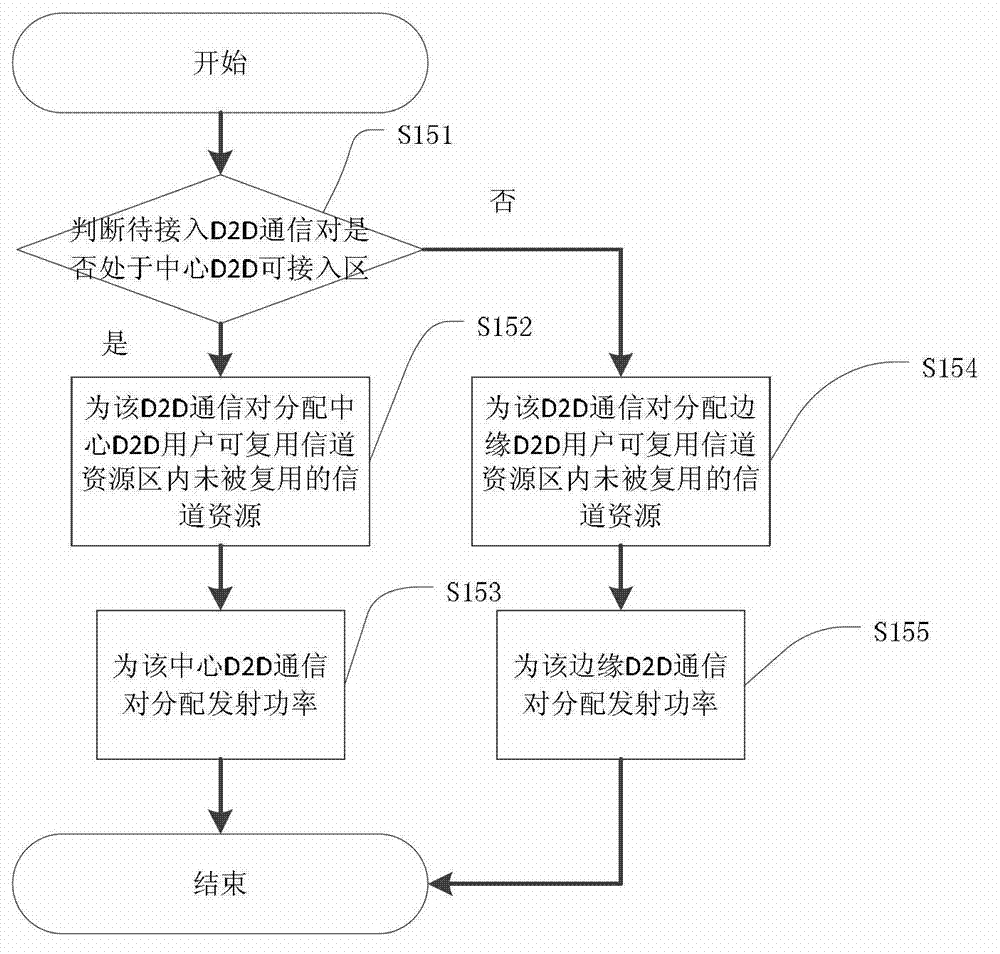D2D (Device to Device)-user power-controlling and resource-allocating method of fractional-frequency reuse honeycomb cell
A technology of fractional frequency multiplexing and cellular cells, which is applied in the field of communication, can solve the problems of power control D2D system and cellular communication system interference, interference, D2D user access area and reusable resource area optimization, etc., to reduce the number of users Effects of energy consumption, improving system throughput, and improving spectrum utilization
- Summary
- Abstract
- Description
- Claims
- Application Information
AI Technical Summary
Problems solved by technology
Method used
Image
Examples
no. 1 example
[0076] The present invention provides a first embodiment. The technical scenario provided by this embodiment is that cell radius R=500m, fractional frequency reuse boundary radius R=300m, and noise power N 0 =-121dBm, 30 central cellular users and 12 pairs of D2D communication user pairs are randomly distributed in the central area of each cell, 20 central cellular users and 8 pairs of D2D communication user pairs are randomly distributed in the edge area of each cell, and the maximum distance between D2D communication pairs is 35m ; cellular user SINR threshold γ cth =3dB, outage probability threshold ε cth =0.05; D2D user SINR threshold γ dth =3dB, outage probability threshold ε dth =0.05; large-scale fading path loss index α=3.76, small-scale fading obeys the exponential distribution with parameter 1;
[0077] Set the central D2D user multiplexable channel resource area as the edge area of the adjacent cell; set the edge D2D user access area as the edge area of t...
PUM
 Login to View More
Login to View More Abstract
Description
Claims
Application Information
 Login to View More
Login to View More - R&D
- Intellectual Property
- Life Sciences
- Materials
- Tech Scout
- Unparalleled Data Quality
- Higher Quality Content
- 60% Fewer Hallucinations
Browse by: Latest US Patents, China's latest patents, Technical Efficacy Thesaurus, Application Domain, Technology Topic, Popular Technical Reports.
© 2025 PatSnap. All rights reserved.Legal|Privacy policy|Modern Slavery Act Transparency Statement|Sitemap|About US| Contact US: help@patsnap.com



